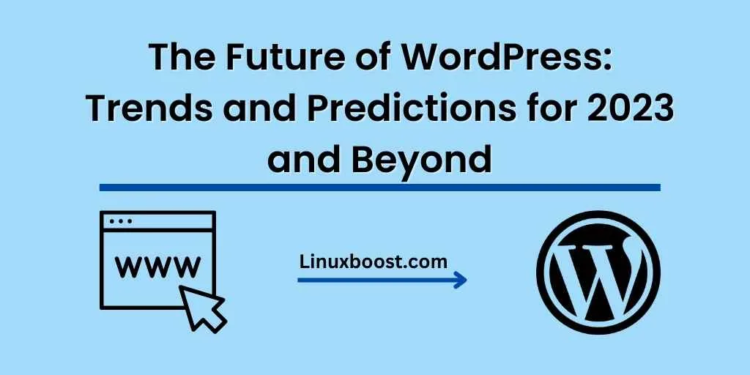WordPress has come a long way since its launch in 2003 as a simple blogging platform. Today, it powers more than 40% of all websites on the internet, and its user base continues to grow rapidly. As we look towards the future of WordPress in 2023 and beyond, there are several trends and predictions worth exploring. In this blog post, we’ll discuss some of these trends and how they are likely to shape the WordPress landscape.
1. The Rise of Headless WordPress
One of the most significant trends in WordPress development is the rise of headless WordPress. This approach involves decoupling the WordPress backend from the frontend, allowing developers to build custom frontend experiences using modern JavaScript frameworks like React, Vue.js, or Angular. Headless WordPress allows developers to leverage the power and flexibility of WordPress as a content management system while delivering faster, more dynamic user experiences.
2. Increased Focus on Security
Security is always a top concern for website owners, and this will continue to be the case in 2023 and beyond. WordPress is already known for its robust security features, but we can expect to see increased focus on security as cyber threats become more advanced. Expect to see more emphasis on two-factor authentication, SSL encryption, and other security measures to keep WordPress sites safe from hackers.
3. The Growing Importance of Accessibility
As the internet becomes more inclusive, accessibility is becoming increasingly important. This trend is also evident in WordPress development, with many developers working to make their themes and plugins more accessible. In the future, we can expect to see more accessibility-focused features and improvements in WordPress core, as well as a growing number of plugins and themes that prioritize accessibility.
4. Continued Growth of E-Commerce
E-commerce has been a driving force behind WordPress’s continued growth, and this trend is expected to continue in 2023 and beyond. With the rise of online shopping and the increasing popularity of mobile commerce, we can expect to see more e-commerce solutions built on WordPress, including more plugins and themes that cater specifically to e-commerce.
5. The Emergence of New Development Tools and Techniques
Finally, as WordPress continues to evolve, we can expect to see new development tools and techniques emerge. Developers are constantly looking for ways to improve their workflow, and we can expect to see more tools and techniques that streamline the development process, such as headless WordPress starter kits and automated testing frameworks.
In conclusion, the future of WordPress looks bright, with plenty of exciting trends and developments on the horizon. From the rise of headless WordPress to the growing importance of accessibility and the continued growth of e-commerce, WordPress is poised to remain a dominant force in the world of web development for years to come. As always, it’s essential to stay up-to-date with the latest trends and best practices to ensure your WordPress site stays relevant and competitive in the years ahead.
If you’re looking for ways to improve your WordPress site’s performance, check out our guide on how to speed up WordPress site for better user experience. And if you’re interested in setting up a home server to host your WordPress site, be sure to check out our guide on how to set up a home server with Ubuntu.





